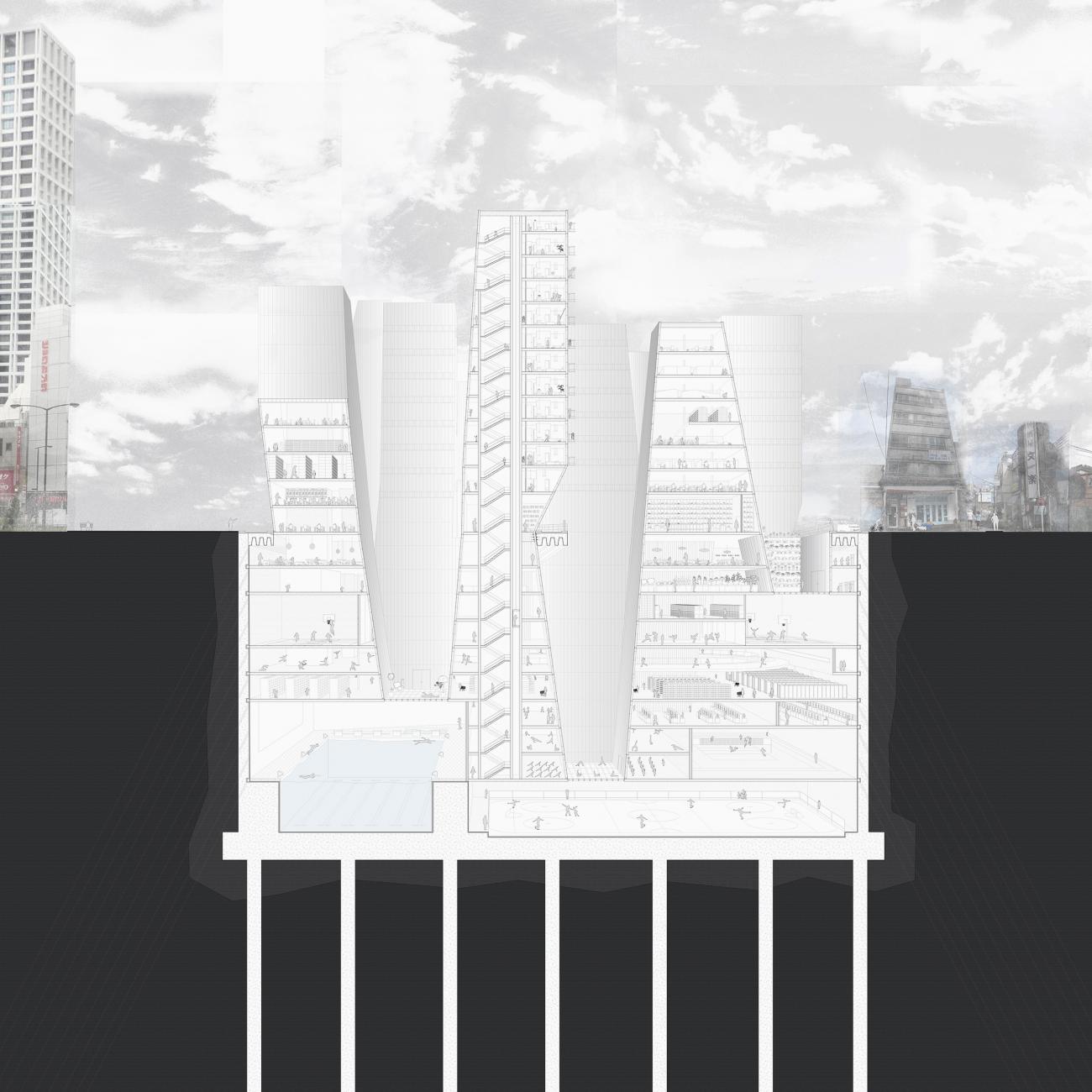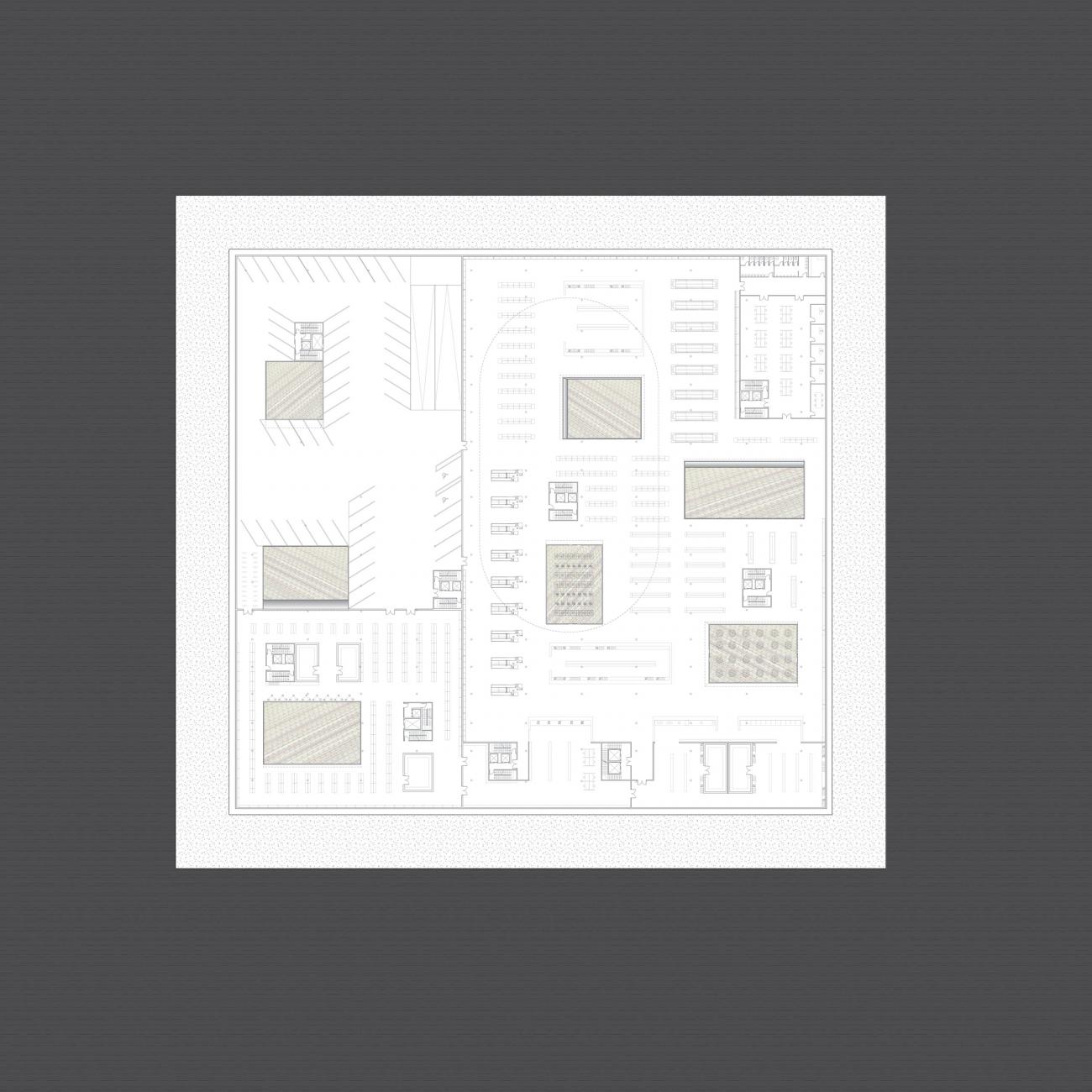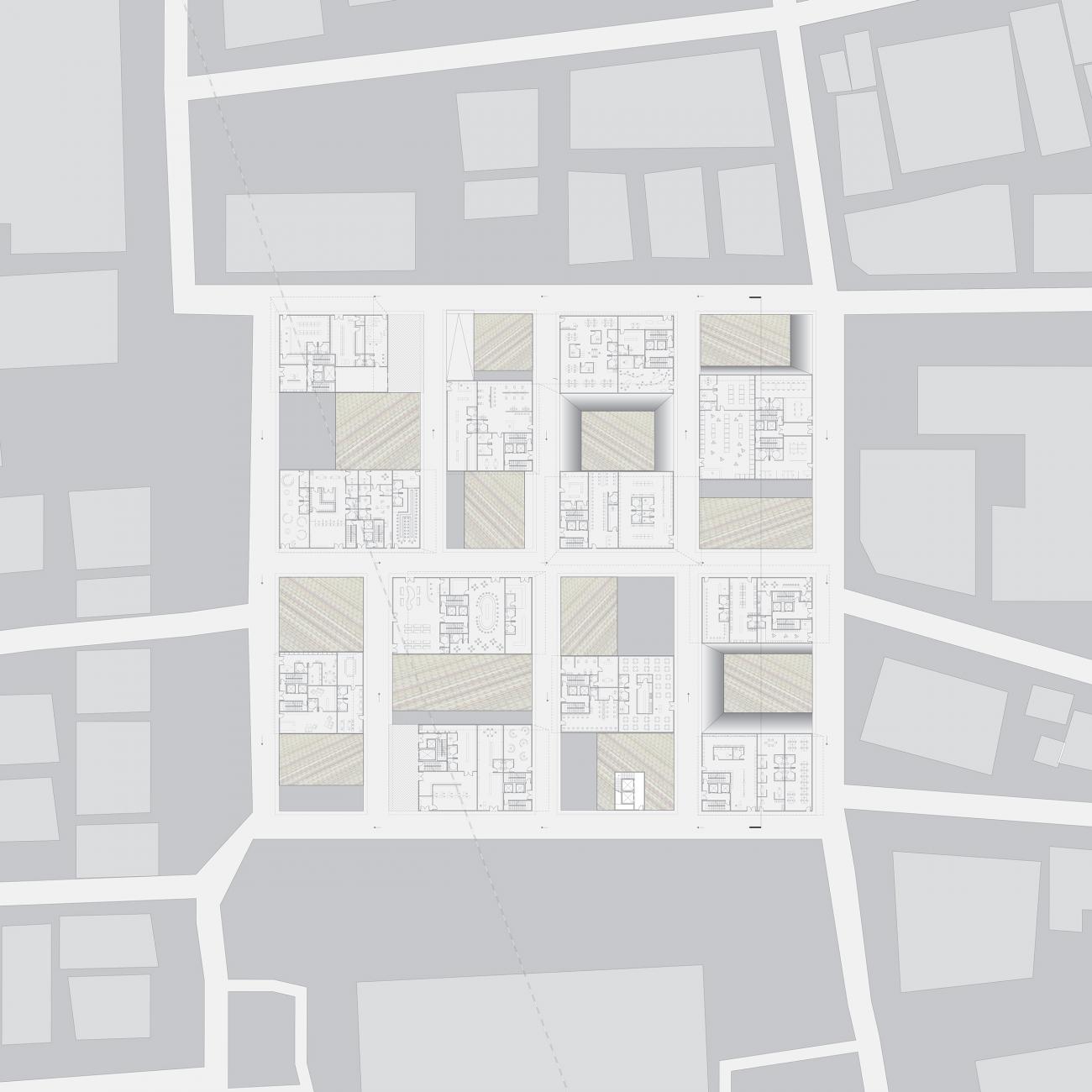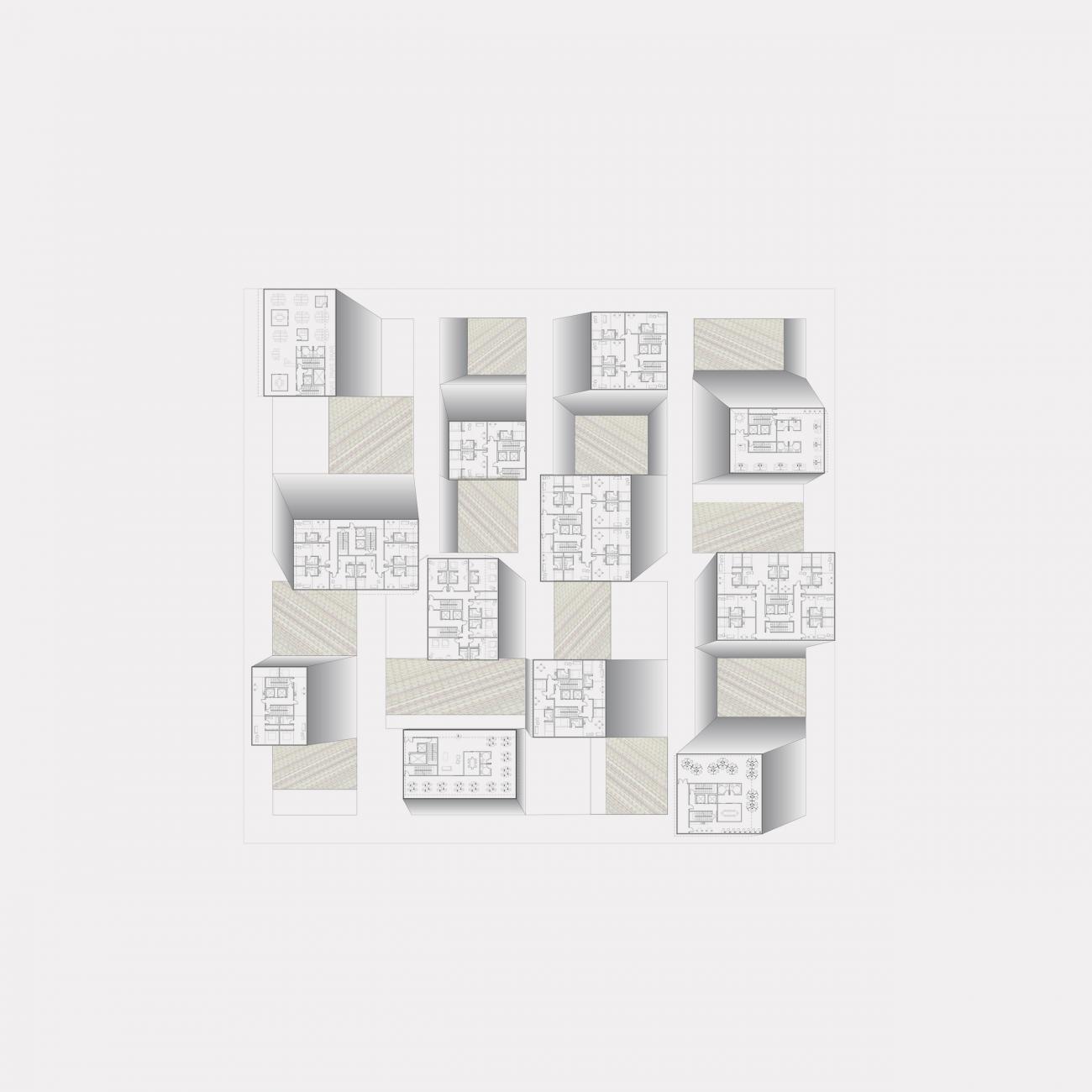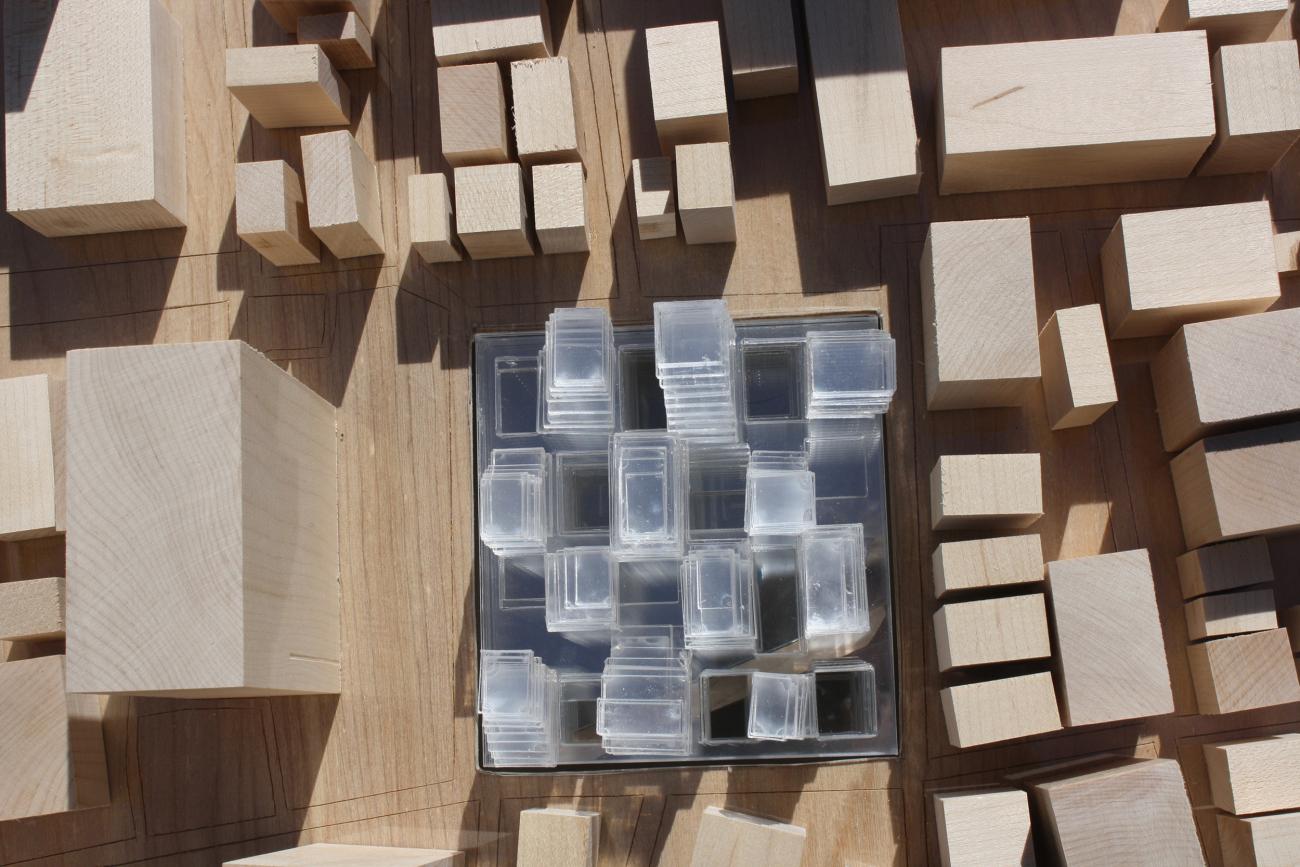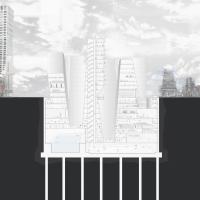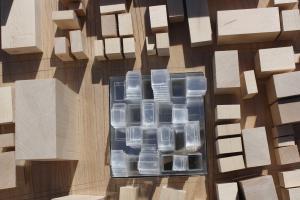Renee Reder
Thesis projects
2014
In Tokyo, where the cost of one acre of land is $7.8 billion and the urban population has grown by about 100,000 per year, urban densification is a necessary but pricy reality. The current mode of subdividing land, caused by Tokyo's high inheritance tax, has produced smaller and smaller plots, each of which has been maxed out, based on the city's FAR restrictions. Recent revisions to property laws have introduced the possibility of purchasing air rights, which has encouraged developers to clear Tokyo's distinctive small-scale urbanism, replacing it with a landscape of tall towers.
The solution to this de-Tokyoism lies in the city’s Deep Underground Utilization Law, enacted in 2001, which designated subterranean rights, allowing owners to build to a depth of 40 meters below ground. As a new model of urban densification, the Effervescent Void City exploits the underground to increase density, both accommodating the rapidly growing population while preserving the urban fabric that makes Tokyo unique. The Effervescent Void City is designed to accommodate large-scale programs like sporting facilities and auditoriums, that don’t fit into Tokyo’s tight existing fabric. The strategy embeds such super-scale programs in the underground, maintaining a contextual smaller scale urbanism above. Strategically placed voids bubble through the development, offsetting density with a surprising airiness. This urban strategy can be inserted throughout the city; size no longer matters and the perceived scale remains unchanged.
Instead of privileging the above or below ground, the Effervescent City model embeds the void as an equal player into the urban fabric vis-à-vis building mass. The void then works to allow the above and below ground to function symbiotically, creating a thickened mat type building below ground that accommodates pockets of air that become smaller as the project goes deeper, and small slab towers that grow distinct from one another and more airy as they emerge above ground, allowing differing programs to exist. Thus, it is the void that works to increase density (and openness) by merging the above and below ground, formal horizontality and verticality as typified in towers and mat buildings, small and large scale programs, producing a model of radical contextualism to shape the future of Tokyo.


